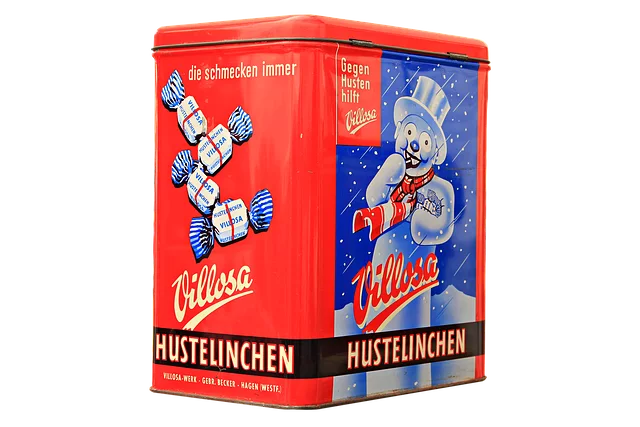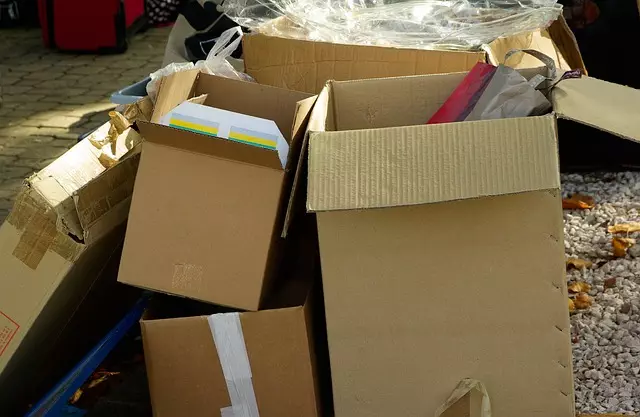Custom foam packaging represents a significant advancement in product protection and sustainability. This eco-friendly packaging is tailored to fit various products precisely, offering superior shock absorption and reducing the risk of damage during transport. Its rise in popularity is due to its ability to minimize waste while maintaining high performance standards, aligning with both consumer and corporate demands for greener practices. Companies adopting these solutions benefit from cost savings on shipping and a lower carbon footprint, while also enhancing their brand image as environmentally responsible leaders. The industry’s shift towards sustainable foam packaging is a testament to innovation in balancing product safety with environmental stewardship, showcasing a commitment to the planet without compromising on protection. The trend reflects a broader industry move towards sustainability, with an emphasis on using recyclable or biodegradable materials that are just as effective as traditional petroleum-based options. This evolution underscores the industry’s dedication to maintaining product safety while also contributing positively to ecological conservation. Custom foam packaging solutions are not only safeguarding a wide range of items but are also helping businesses meet sustainability goals, which is likely to drive further growth in their adoption globally.
Explore the multifaceted world of custom foam packaging, a pivotal element in safeguarding products during shipping and storage. This article delves into its applications, benefits, and the evolution that has positioned it as an indispensable component in logistics and inventory management. We will examine how material choices have advanced to offer eco-friendly solutions without compromising on product protection. Furthermore, insights into designing custom foam inserts for diverse products ensure optimal security for your goods. Additionally, we’ll assess the cost implications of adopting such packaging, highlighting its long-term financial advantages. Innovations in protective foam materials are also under the microscope, emphasizing their role in enhancing product safety. Real-world case studies illustrate the successful integration of these sustainable practices, proving that eco-friendly and economically sound packaging is not just a preference but a necessity in today’s market.
- Understanding Custom Foam Packaging: Applications and Benefits
- The Evolution of Protective Foam Packaging in Shipping and Storage Solutions
- Material Choices in Eco-Friendly Foam Packaging: Sustainability Meets Protection
- Designing Effective Custom Foam Inserts for Varied Product Types
- Cost-Effectiveness of Custom Foam Packaging: Investment vs. Savings
- Innovations in Protective Foam Materials for Enhanced Product Safety
- Case Studies: Successful Implementation of Eco-Friendly Foam Packaging Solutions
Understanding Custom Foam Packaging: Applications and Benefits
Custom foam packaging offers a versatile and effective solution for protecting various products during transportation and handling. Its tailored design ensures that items of diverse shapes and sizes receive precise protection, minimizing the risk of damage and extending their shelf life. This adaptability makes it an excellent choice for industries ranging from electronics to pharmaceuticals, where shock absorption and precise fit are paramount.
Eco-friendly foam packaging is gaining momentum in the market as businesses and consumers alike seek sustainable options without compromising on protection. These environmentally conscious alternatives are made from recyclable or biodegradable materials, reducing the carbon footprint associated with traditional packaging methods. Additionally, their lightweight nature leads to reduced shipping costs and lower emissions, making them a responsible choice for companies aiming to implement green practices. Protective foam packaging in this eco-friendly form maintains its high performance, safeguarding products during transit while aligning with the growing demand for sustainable solutions.
The Evolution of Protective Foam Packaging in Shipping and Storage Solutions
The realm of protective foam packaging has undergone significant transformations, particularly with the advent of custom solutions that cater to the diverse needs of various industries. Traditionally, foam packaging was a one-size-fits-all approach, designed primarily for shock absorption and material stability during transit. Today, advancements in technology have enabled manufacturers to produce foam packaging solutions that are both tailored to the specific contours of products and optimized for enhanced protection. Custom foam packaging now offers precise fit designs that conform to the unique shapes and sizes of items, ensuring minimal movement within the package. This level of customization not only improves product safety but also reduces the likelihood of damage during shipping and storage.
In parallel with the growth in customization, there has been a marked shift towards eco-friendly foam packaging options. Concerns over environmental sustainability have driven innovation in materials and manufacturing processes. Today’s protective foam packaging solutions often incorporate recycled content and are designed for reuse or recycling at the end of their lifecycle. These environmentally responsible choices align with corporate social responsibility objectives and consumer expectations, positioning companies as leaders in sustainable practices. The evolution of foam packaging from a protective function to an eco-conscious choice represents a significant stride in the industry’s commitment to sustainability while maintaining the high standards of protection required for shipping and storage solutions.
Material Choices in Eco-Friendly Foam Packaging: Sustainability Meets Protection
In the realm of shipping and logistics, the demand for custom foam packaging has surged as businesses seek solutions that offer superior protection for their products while prioritizing sustainability. Eco-friendly foam packaging stands at the forefront of this movement, providing a protective barrier against impacts, vibrations, and environmental factors that could otherwise compromise product integrity. Manufacturers are increasingly turning to bio-based materials and recyclable options to reduce the carbon footprint associated with traditional packaging methods. These sustainable choices include foam made from plant-based or recycled content, which offers comparable shock absorption properties to petroleum-based foams without the same environmental impact. The shift towards eco-friendly options is a testament to the growing awareness of the importance of sustainability in all facets of commerce, and the custom foam packaging industry is adapting swiftly to meet these evolving demands. By integrating renewable resources and advanced recycling techniques, these packaging solutions not only safeguard products during transit but also contribute positively to environmental conservation efforts. Companies that invest in eco-friendly protective foam packaging differentiate themselves by aligning with consumer preferences for responsible brand practices, all while ensuring their products arrive undamaged and in perfect condition.
Designing Effective Custom Foam Inserts for Varied Product Types
When it comes to safeguarding products during transit, custom foam inserts stand out as a superior packaging solution due to their precise fit and protective capabilities. These inserts are tailored to the unique dimensions and contours of each product type, ensuring that every item is cradled securely against potential impacts and vibrations. The design process for these foam inlays involves careful consideration of the product’s weight, shape, and any critical points that require additional protection. By utilizing advanced CAD software and precise manufacturing techniques, companies can create custom foam packaging solutions that offer unparalleled shielding. This level of customization minimizes the risk of damage during shipping, which is crucial for maintaining customer satisfaction and product integrity.
In the quest for sustainability, eco-friendly foam packaging options have become increasingly popular. These sustainable solutions are crafted from environmentally responsible materials that offer comparable protective qualities to traditional foams. Businesses opting for these inserts can significantly reduce their carbon footprint without compromising on the product’s safety during transport. The eco-friendly foam is often made from recyclable or biodegradable substances, aligning with modern consumer values and environmental regulations. This commitment to sustainability not only enhances a company’s brand image but also positions it as an industry leader in innovative and responsible packaging solutions. Whether the goal is to protect sensitive electronics, delicate glassware, or any other fragile items, custom foam inserts can be engineered to meet these needs while adhering to green principles.
Cost-Effectiveness of Custom Foam Packaging: Investment vs. Savings
Custom foam packaging stands out as a cost-effective solution for businesses seeking to protect their products during shipping and handling. By opting for bespoke designs, companies can minimize waste and tailor the packaging to the exact dimensions of their items, ensuring maximum protection with minimal material use. This precise fit reduces the amount of cushioning needed, which translates to savings on raw materials. Moreover, the longevity of products packaged with custom foam solutions often mitigates the risk of damage and the associated costs of replacements or returns.
Investing in eco-friendly foam packaging not only safeguards products but also contributes positively to a company’s sustainability profile. The use of recyclable or biodegradable materials aligns with environmental regulations and consumer expectations, potentially opening up new markets and strengthening brand loyalty. The cost savings from reduced material usage are complemented by the positive brand association that comes from demonstrating corporate responsibility. Companies leveraging protective foam packaging solutions can expect a dual benefit: their products arrive undamaged, and their commitment to the environment is showcased, positioning them as forward-thinking leaders in their industry.
Innovations in Protective Foam Materials for Enhanced Product Safety
In recent years, advancements in custom foam packaging have significantly improved product safety across various industries. These innovations focus on creating materials that provide superior protection while being tailored to the specific needs of the products they encase. The evolution of protective foam packaging has led to the development of solutions that are not only effective at absorbing shock and preventing damage but also adaptable to a wide range of product shapes and sizes. Manufacturers are now incorporating eco-friendly materials into their foam packaging designs, addressing environmental concerns without compromising on protection. This shift towards sustainability ensures that as companies prioritize the safety of their products during transit, they can also make responsible choices that align with green initiatives. The use of recyclable or biodegradable components in custom foam packaging not only contributes to a cleaner environment but also resonates with consumers who are increasingly conscious of their ecological footprint. This dual focus on protection and environmental stewardship is a testament to the industry’s commitment to innovation and its responsiveness to the needs of both businesses and consumers.
Case Studies: Successful Implementation of Eco-Friendly Foam Packaging Solutions
In the realm of sustainable packaging solutions, custom foam packaging has emerged as a pivotal player in safeguarding products during transit while upholding environmental stewardship. Companies across various industries have embraced eco-friendly foam packaging as a means to reduce their carbon footprint without compromising on product protection. A case study from the tech sector illustrates this seamless integration; a leading electronics manufacturer transitioned to biodegradable foam packaging, significantly cutting down on waste and aligning with consumer preferences for green alternatives. This switch not only bolstered their brand image but also ensured that their delicate devices arrived intact at their destinations. Similarly, an automotive company implemented protective foam packaging for shipping critical components. The result was a 30% reduction in packaging waste, demonstrating the potential for eco-friendly solutions to coexist with stringent product protection requirements. These examples underscore the versatility and effectiveness of custom foam packaging as a sustainable choice that does not skimp on performance or durability. As businesses continue to seek innovative ways to minimize environmental impact, the adoption of such eco-conscious materials is poised to expand, setting a precedent for industries worldwide.
In conclusion, custom foam packaging stands as a testament to innovation in protective and eco-friendly solutions for product shipping and storage. Its multifaceted benefits—from safeguarding diverse products to offering cost-effective, sustainable options— underscore its significance in modern logistics. The evolution of materials and design techniques has led to enhanced product safety without compromising environmental considerations. As businesses increasingly prioritize sustainability, custom foam packaging emerges as a smart investment that balances protection with eco-friendly practices. The case studies highlighted the real-world successes of these solutions, proving their efficacy across various industries. Embracing this adaptable packaging option is not just prudent for businesses; it’s a step towards a more sustainable future in commerce and beyond.


